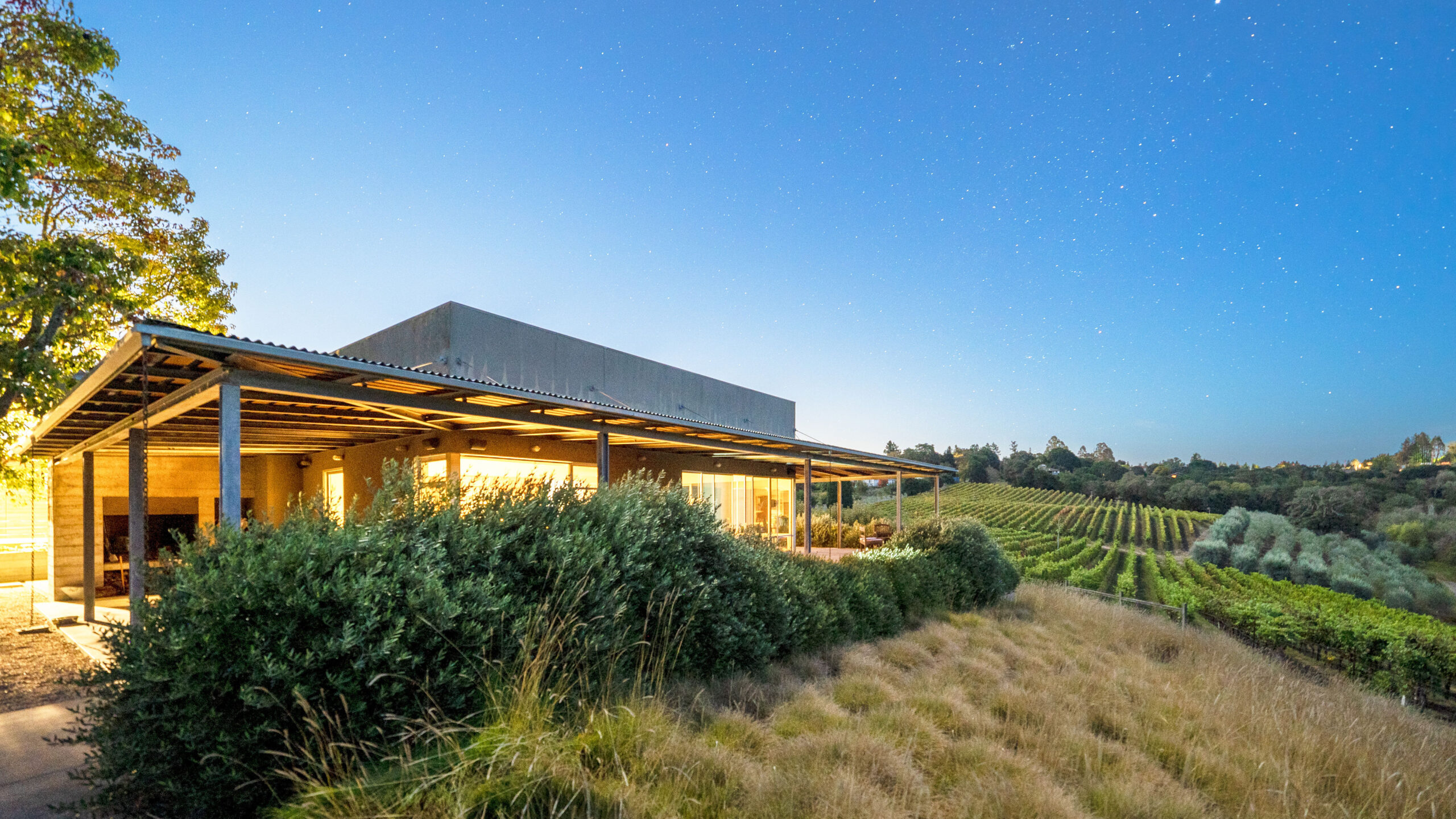2023 Harvest Journal at Singer Baker Lane Estate
When collecting my thoughts on this year’s harvest, atypically the entirety of the growing season necessarily figures in to the narrative. In other words, unlike the previous 20 years when historical weather patterns generally pertained, things were pretty much turned on their ear from March through October. Unsurprisingly, this year’s agricultural campaign was in turn decidedly out of sorts.
As climactic trends during the Anthropocene have been altered by a warming planet, it is important to remember that not every place is simply getting hotter. Global climate change and disruption is the over-arching dynamic, and our extremely cool summer in much of coastal Northern California was a glaring example of this. Experiencing this divergence from the prevailing torrid weather in so much of the rest of the northern hemisphere was an object illustration of global weather turbulence.
Our rainfall amounts in the preceding winter were huge, essentially double a ‘normal’ year’s totals. While this boded well for restoring the reservoirs, aquifers, and the Sierra snowpack, the extended rainy season precluded the onset of warm temperatures during bloom, and led to a slow start. Our early optimism about the possibility of another bountiful year (as prompted by high blossom counts) quickly was snuffed as a variety of problems arose in succession. Bloom and fruit set for self pollinators like grapes (and olives too) can be profoundly affected (and diminished) by cool and moist conditions. Irregular cluster formations (aka ‘hens and chicks’) were far more common than we’ve ever seen. Mildew (the season’s first disease scourge) also loves atmospherics of this type. Our proactive response (implementing organic strategies) to this vector helped us avoid the worst, but mildew scars on grapes and the vines’ lignous material were an ongoing artifact of the intensity of the season’s mildew pressure.

A visit from a friend.
I could go on and on detailing the obstacles that we faced, but where the rubber really met the road came about with how the protracted lack of warmth led to the hard decision to drastically reduce our crop in early August. Even with a much smaller fruit load, the crucial benchmark of verasion (when the grapes change from green to purple in their march towards maturity) was painfully drawn out. As a result, further ‘green dropping’ was necessitated. A series of unexpected late summer/early fall rains (remember the devastating August floods in Death Valley ?) retarded maturation and appeared to put us at risk of the blight of botrytis mold. Again, though, the unexpected happened. The kind of wet and warm conditions that propel botrytis outbreaks never quite materialized and October’s extended period of warm, dry (aside from some occasional showers), and generally even conditions took hold. The grapes never experienced a sprint towards maturity nor did they stall in their development. Ultimately, this led to our second latest harvest ever which concluded the early morning of November 2.
We ended up with the smallest crop in the modern (and reliably productive) period of the vineyard, i.e. the last 12 vintages. In practice this meant harvesting a bit less than half of 2022’s yield. However, because even that outcome seemed so perpetually in doubt, I’m still in something of a state of disbelief about the potential quality the season appears to have availed. The ‘numbers’ on the Viognier seem as close to ideal as any that we’ve picked, while it seems that Syrah climbed fully in to the desired window for acid, tannin, texture and extractive potential. There’s a long way to go to see how the full vinous expression will play out, but to say that I’m encouraged and intrigued is an understatement. So even as I lament the season’s legacy of complete failure of almost all of our stone fruit and persimmon trees (and, more importantly, an 85% dip in our olive crop), my preternatural optimistic self has me grinning about our grapes. We do get to make wine, and there’s pretty darn good chance it will have something interesting to say for itself.
-Stephen
PHOTO CREDITS:
Top/Main photo: Tim Carl
Deer photo: Braden Tavelli

